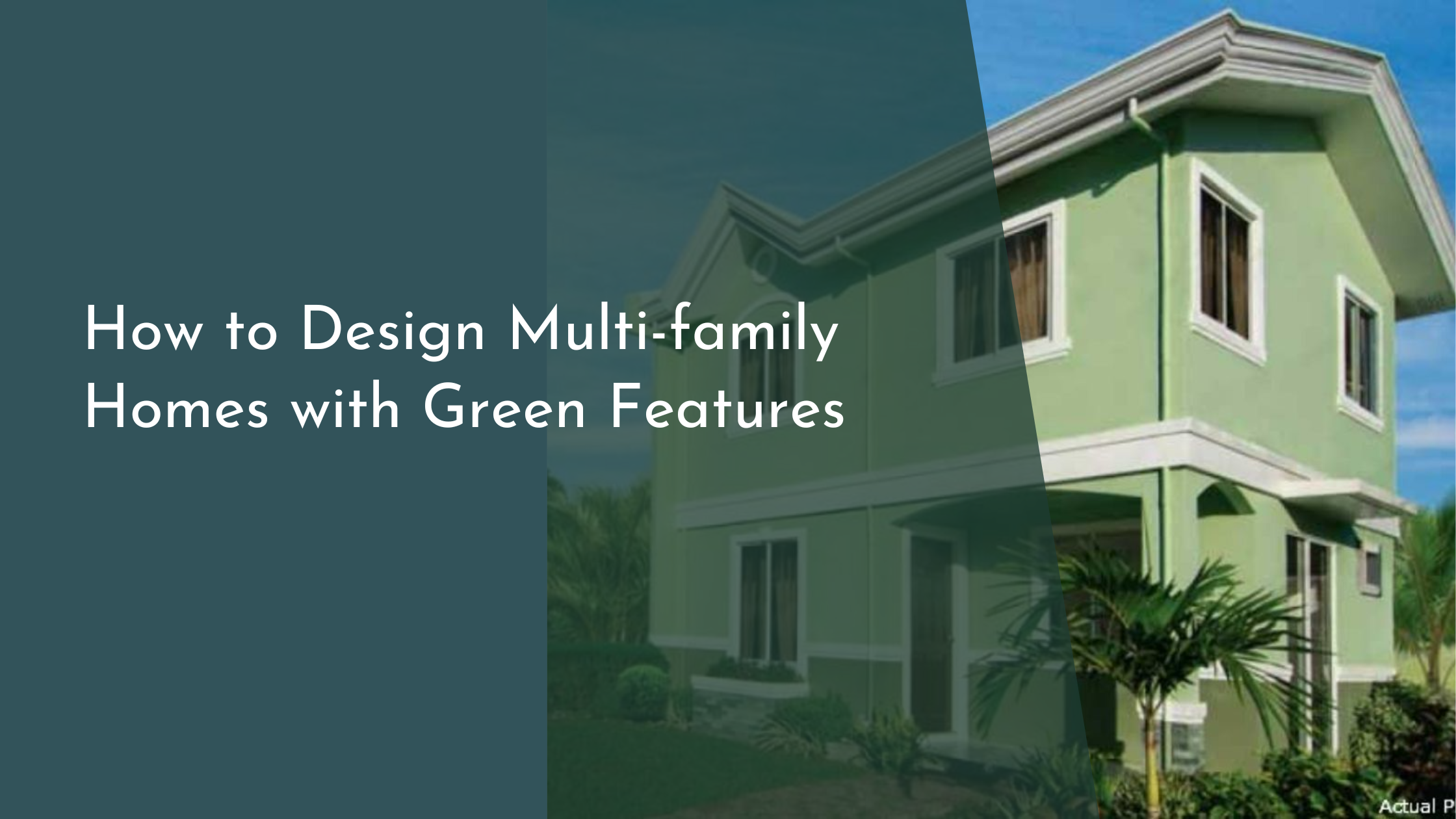How to Design Multi-family Homes with Green Features
As the world increasingly recognizes the pressing need for sustainable living, the design of multi-family homes with green features is gaining prominence. These eco-friendly residences not only contribute to environmental conservation but also offer cost savings and healthier living conditions for residents. By integrating green design principles, architects and developers can create sustainable communities that benefit both individuals and the planet.
Understanding the Importance of Green Design
Green design is essential in the modern world as it addresses the urgent need to reduce the carbon footprint of residential buildings. Multi-family homes, with their potential to house numerous families within a single complex, present a substantial opportunity for implementing sustainable practices. By optimizing energy use, reducing waste, and utilizing eco-friendly materials, these homes can significantly contribute to environmental protection. Moreover, green design can enhance indoor air quality, resulting in healthier living spaces that promote the well-being of residents.
Incorporating green features in multi-family homes also reflects a commitment to social responsibility. As awareness of climate change and environmental degradation continues to grow, there is a rising demand for sustainable housing options. By investing in green design, developers can meet this demand while also differentiating their properties in a competitive market. Additionally, sustainable homes often qualify for incentives and certifications, such as LEED, which can further enhance their appeal to environmentally conscious consumers.
Key Elements of Eco-Friendly Multi-Family Homes
One of the key elements of eco-friendly multi-family homes is energy efficiency. This can be achieved through the use of high-performance windows, enhanced insulation, and energy-efficient appliances. Solar panels can also be installed to harness renewable energy, reducing reliance on fossil fuels and lowering utility costs for residents. Furthermore, the integration of smart home technologies allows for the monitoring and optimization of energy consumption, contributing to overall efficiency.
Water conservation is another critical component of green multi-family home design. Low-flow fixtures, dual-flush toilets, and rainwater harvesting systems can be implemented to significantly reduce water usage. Additionally, native landscaping and drought-resistant plants can minimize the need for irrigation, enhancing the sustainability of the development. By prioritizing water conservation, multi-family homes can play a vital role in preserving this precious resource and promoting sustainable living practices.
Innovative Technologies for Sustainable Living
Innovative technologies are transforming green design, providing new solutions for sustainable living in multi-family homes. One cutting-edge technology is the incorporation of green roofs, which offer insulation, absorb rainwater, and reduce heat absorption. These roofs not only enhance energy efficiency but also contribute to biodiversity by providing habitats for various species of plants and insects. Another innovation is the use of advanced building materials, such as cross-laminated timber, which have a lower carbon footprint compared to traditional materials like steel and concrete.
Smart home systems are another key technological advancement driving sustainability in multi-family residences. These systems enable residents to control lighting, heating, and cooling remotely, ensuring optimal energy use. Additionally, they can provide real-time data on energy and water consumption, allowing residents to make informed decisions to further reduce their environmental impact. By incorporating these innovative technologies, multi-family homes can offer a more efficient and sustainable living experience.
Designing Community Spaces with Nature in Mind
Designing community spaces with nature in mind involves creating environments that promote interaction with the natural world while encouraging sustainable behaviors. Outdoor spaces, such as community gardens, walking paths, and rooftop terraces, offer residents opportunities to engage with nature and enjoy the benefits of outdoor living. These spaces can be designed with native plants and ecological features that attract pollinators and support local wildlife, fostering a sense of environmental stewardship among residents.
Indoor community spaces can also be designed to maximize natural light and ventilation, reducing the need for artificial lighting and climate control. Biophilic design elements, such as living walls and natural materials, can create a calming atmosphere and enhance the connection to nature. By prioritizing nature in the design of community spaces, multi-family homes can provide residents with a tranquil and sustainable living environment, promoting a sense of well-being and community.
Designing multi-family homes with green features is a crucial step toward achieving a more sustainable future. By understanding the importance of green design, incorporating key eco-friendly elements, leveraging innovative technologies, and designing community spaces with nature in mind, architects and developers can create vibrant and sustainable communities. As we continue to prioritize environmental responsibility, these green multi-family homes will serve as a model for sustainable living, benefiting both current and future generations.

